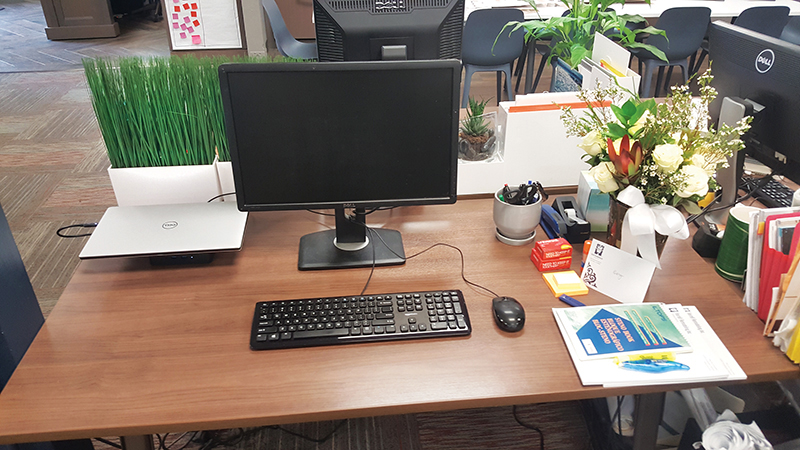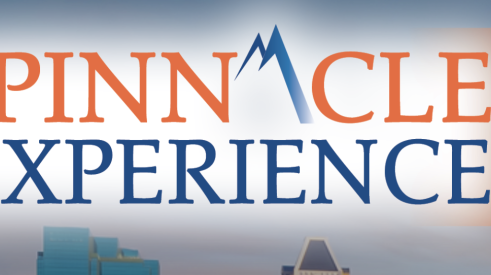From 2014 to 2020, I was the CEO of Harrell Remodeling. Our 2018 revenue was just over $9.7 million.
A big initiative we’re focusing on right now is onboarding employees. We have two new folks that recently started with us, and another fresh face is joining the team soon. Over the years, we have been very stable in terms of staffing, so this amount of churn is unusual for us.
Hiring Smart
When interviewing prospective employees, we look for a number of things. Obviously, we want someone who has great interpersonal skills and fits with the team. But we also need to ensure that he or she has the knowledge necessary for the job.
In the case of a project manager, we show them a set of plans and get their impressions. We say, “Please tell us about this project. Do you see anything that concerns you? Do you see anything that’s missing?” We’re interested not only in what they pick up, but also in the process they use to get there. How is the information presented? We ask if they want some time to study the plans or if they want to talk it through on the spot. We also ask if they want to take notes. Often, the way someone communicates is just as important as the information itself.
Studies show that a strong, structured onboarding process leads to less turnover. It also sets the stage for better morale.
For a potential sales position, we show them a project, and ask what they think it would cost. It’s helpful to see whether their estimate is off, and by what order of magnitude. We’re also interested in the way they give the number. Are they tentative? What questions, if any, do they ask before sharing their insights?
I started with Harrell as an estimator in 1996, and that test was one of the first things they did. They gave me a project and said, “Why don’t you come up with a number for this, and we’ll compare it to what our estimator had?” I totally blew it. My errors were all around shortcutting cleanup and project administration. But I redeemed myself at the company picnic a couple of months later. We had one of those contests where you have to guess how many screws are in a big jar, and there were many hundreds. I only missed it by nine.
A Good Fit
In general, we’re very slow to hire. By the time someone is brought on board, they will have met with key people not just for an interview at the office but also in a less formal setting. We like to meet them after work hours at a local restaurant. It helps to get to know someone in neutral territory to see if they are a good fit for the culture of the company. We don’t do that for every position, but if it’s a high-level hire, I like to be there along with our design team manager.
A Welcoming Environment
With these new hires, we suddenly had to think about our onboarding procedures. We wanted people to feel comfortable on their first day and show that we were prepared to welcome them.
To that end, it’s important for us to have their space ready, a computer that’s up and running, an active email address, and a working phone. Some people don’t want a company phone since they would rather not carry two devices, but we want to have it ready in order to give them the option.
We also create a welcoming environment. We give them a card from the manager or president, and we put flowers at their desk.
Onboarding Materials
Every new hire is provided with a packet that we call a passport. It’s not very passport-like in appearance, but we’re in discussions about how to achieve that in the future. Our passport is a checklist of the most important things that we want to have this person cover in the next two weeks. It involves an orientation with each member of the management team, various other staff, and company history (we include a Powerpoint about how the company was founded).
We want them to get an overall sense of how Harrell operates, even if some of these components aren’t directly part of their job. They meet with our sales manager to learn about the sales processes and how a lead call turns into a job or not. They also meet with the estimator, and on the design side, the CAD coordinator. That’s an important role, like air traffic control, that ensures everything happening is in sync with the workflow.
The passport is self-driven, and the way someone gets through it tells us a lot about them. Do they take the initiative and schedule meetings with the people on the list?
If the new person is in a sales role, part of that orientation includes a formalized shadowing. They might sit in on a lead call, or go along on an appointment. It’s also important that they have the opportunity to experience the various processes on a job that’s already in motion. For example, we might have them walk the job early on with the trades, or they might go through an electrical or plumbing walk-through to observe how we engage with those subcontractors. We also like them to experience a punch-list walk-through to see firsthand how we close out a job.
Studies show that a strong, structured onboarding process leads to less turnover. It also sets the stage for better morale and productivity as well as a positive workplace culture—all key characteristics we want to embody as a company.
Add new comment
Related Stories
Brian Gottlieb Receives Remodeling Mastery Award
Presented by industry icon, Mark Richardson, the award celebrated Gottlieb’s extraordinary impact on remodeling
What's Beyond the Hammer?
Working with Brian Gottlieb on the book Beyond the Hammer provided a masterclass on how to build an aligned team
How to Eliminate Boring, Languishing Meetings
Leff Design Build ensures maximum productivity and efficiency through these straightforward methods
5 Counterintuitive Strategies to Improve Your Business
Follow these strategies to inspire employees, instill trust, and beat the competition
Couple Act As Much More Than General Contractors
How LBR Partners uplifts and educates their Spanish-speaking trade partners
Artificial Intelligence Meets Design
An architect looks at the pitfalls of using technology to take over human design tasks
What the Most Successful Remodelers are Doing Right Now
Industry advisor Mark Richardson shares the answers to his three most asked questions: What's the remodeling market like? What are other remodelers doing? How do I measure up?
How to Create a World-Class Remodeling Team
Great remodeling companies position themselves for the future with the right players
Registration Open for The Pinnacle Experience 2024
Register today for The Pinnacle Experience 2024 in Baltimore from June 26-28. Join the best and brightest in home improvement and remodeling for insight, advice, and relationship-building that will help you take your business to new heights.
Focus on What You Can Control for Remodeling Success in 2024
Neil Kelly's CEO shares his plan of attacking for remodeling challenges in our 2024 Thought Leader predictions series













